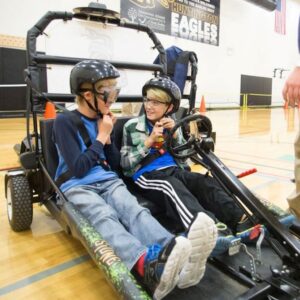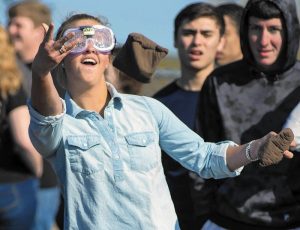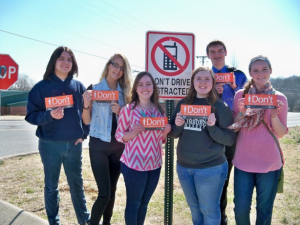 Every crash, injury, and death caused by drunk driving is preventable. With options like sober designated drivers, ride-sharing apps, and public transportation, there’s no reason ever to drive drunk.
Every crash, injury, and death caused by drunk driving is preventable. With options like sober designated drivers, ride-sharing apps, and public transportation, there’s no reason ever to drive drunk.
Learning about the dangers and impacts of drinking and driving is one crucial way to help stop risky behavior. Keep reading for some of the startling statistics you can share in your drunk driving prevention program, as well as interactive tools and resources you can deploy to engage participants.
Thanks to the efforts of anti-drunk driving organizations, government agencies, and others, the number of alcohol-related crashes each year is trending downward. But there’s still a long way to go toward ending drunk driving crashes and deaths. The sobering statistics above, combined with stories from real-life friends and families impacted by drunk driving, can be powerful tools for your drunk driving prevention program.
Hands-on learning activities can also be very educational by giving participants a memorable simulation of real-life experiences to teach them what it’s like to drive impaired and push them to think twice before getting behind the wheel drunk in real life.
Fatal Vision®Alcohol Impairment Goggles simulate what it’s like to be under the influence of alcohol in a safe and educational environment. While wearing the goggles, participants immediately feel how difficult it can be to perform simple tasks such as walking a straight line, standing on one leg, or tossing a ball.
When used in conjunction with a drunk driving simulator SIDNE® drunk driving pedal kart, or other drunk goggles and alcohol awareness activities, alcohol impairment goggles can effectively demonstrate and reinforce the lessons throughout your drunk driving prevention program.
Our electric drunk driving simulator, SIDNE® (the Simulated Impaired Driving Experience), takes the hands-on experience one step further by demonstrating what it’s like to operate a vehicle under the influence of alcohol. In “alcohol-impaired’ mode, drivers and passengers can feel a loss of control, erratic acceleration and braking, lane shifts into “oncoming traffic,” delayed response time, and impaired judgment.
The Fatal Vision Roadster Pedal Kart is an extremely flexible and relatively affordable tool for your alcohol awareness program. It’s easy to use and can be operated indoors, outdoors, and even on off-road terrain.
Not sure which drunk driving simulator is right for your classroom? Check out our blog to learn more about the Roadster Pedal Kart and SIDNE® Drunk Driving Simulators.
Turn ‘N Learn Classroom Challenge is an interactive game created to help players identify safe decision-making strategies and share important facts related to alcohol use and impaired driving. Group members team up to earn points by answering questions and performing tasks. The kit includes a game wheel, playing cards, a pair of alcohol impairment goggles, drowsy and distracted driving goggles, and gameplay activities.
We can help you identify the right resources and programming to help with drunk driving prevention in your school or community. Get started by calling our toll-free number 800.272.5023 or contacting us online today to explore which resources are right for your program.
Benefits of Using Drunk Driving Simulators for an Alcohol Awareness Program
Drunk driving simulators can help engage participants and provide an enriching and memorable experience. In this post, we’ll cover six benefits of using drunk driving simulators for your alcohol awareness program.
3 Tips for Implementing a Successful Drunk Driving Prevention Program
The best way to prevent drunk driving is to stop it from happening in the first place through education and awareness.
 How the “Reduce Teen Crashes” Web Program is Impacting Alcohol Education Programs Around the Country
How the “Reduce Teen Crashes” Web Program is Impacting Alcohol Education Programs Around the Country
The Reduce Teen Crashes web program is an innovative crash prevention and alcohol awareness program that teaches teens about the dangers of drinking and driving and other risky behaviors.